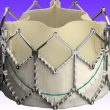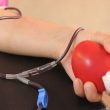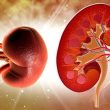For many patients, the first symptom of heart disease is acute MI, or even sudden death. Changes in lifestyle and optimal medical treatment (OMT) are vital to the prevention of serious events, but we cannot help wondering whether preventive stenting might do it. Intravascular ultrasound (IVUS), optical coherence tomography (OCT), NIRS near-infrared spectroscopy (NIRS) and computed...
New Risk Factors: Air Pollution, Air Temperature, Pain, and Sleep Hours
Traditionally, we have used age, gender, obesity, hypertension, dyslipidemia, smoking, and diabetes as cardiovascular risk factors. However, this new era (during which the changes made to care for our shared home, the planet, will play a key role) has seen the emergence of new factors such as pollution, noise, temperature, sleep hours, and air quality....
Good News at 3 Years for “Valve-in-Valve”
In this new era, the paradigm to treat the whole spectrum of transcatheter aortic valve replacement (TAVR) patients has started to shift beyond risk. However, broadening the spectrum raises the question of durability, which is why any long-term TAVR outcomes in any context are welcome. This specific study studied TAVR durability in the treatment of...
Myocardial Revascularization Surgery Hits a Plateau
Hopes were raised high by the ARTS study, when set to show the benefit of bilateral internal mammary arteries (BIMA) during coronary artery bypass graft surgery compared over the use of a single internal mammary artery (SIMA) at 10 year follow up, but only one sub-study was able to show an advantage over radial grafts....
Manual vs. Mechanical Compression after Transradial Catheterization
For patients undergoing transradial catheterization, whether puncture site compression is manual or mechanical has no significant difference as regards post procedural radial artery occlusion (RAO) rate. Hemostasis is shorter with manual compression, but it seems difficult to implement in the clinical practice. We could carry out an economical sub-analyzis of this study to find out...
Excellent Outcomes for the First Sirolimus Eluting Balloon Tested on Instent Restesosis
Much has been done since studies on conventional balloon angioplasty for BMS instent restenosis showed over 40% new revascularization. Drug eluting stents, aimed at improving this problem, have never achieved 0% restenosis, which is why technologies such as paclitaxel coated balloons have been developed, with reasonable efficacy (8% to 10% reinterventions rate for BMS restenosis and 17% to 23%...
An Important Study Shows That Renal Function Must Be Cared for in TAVR
Courtesy of Dr. Carlos Fava. The presence of renal dysfunction in the “real world” is over 25% in patients who undergo transcatheter aortic valve implantation (TAVI). The evolution of this disease among patients who are subjected to a replacement is well known, but evidence for patients who undergo TAVI is still limited, particularly for those who...
Diabetics’ Silent Ischemia Myth Busted
Diabetes mellitus patients generally present more diffuse coronary disease, faster lesion progression and higher risk of restenosis after PCI. The way these anatomical differences translate into in a different clinical practice, compared to non-diabetic patients, remains unclear. Prior studies comparing the frequency of angina symptoms in diabetic vs. non-diabetic patients have arrived to contradicting outcomes,...
It Is a Fact: Cerebral Protection in TAVR Has Proved to Reduce Stroke and Death
Cerebral ischemic events after transcatheter aortic valve replacement (TAVR) have been identified as independent predictors of morbidity and mortality. New-generation devices have managed to partially reduce the rate of cerebral events, but it still is around 5.5% at 30 days for patients undergoing TAVR through transfemoral access. First data on cerebral protection devices had only shown...
A New Opportunity for Renal Denervation
Courtesy of dr. Carlos Fava. At first, renal denervation enjoyed a considerable boost because, according to early studies, it lowered blood pressure (BP). However, after the results of the SYMPLICITY HTN 3 Trial its popularity decreased. Currently, the development of new technologies and greater operator experience may facilitate a change in this scenario. This...








